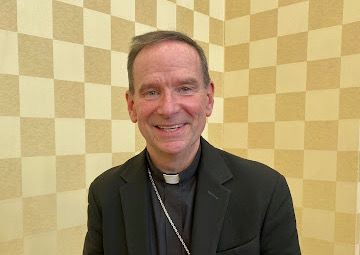
Washington, D.C. Newsroom, Jan 30, 2023 / 12:50 pm (CNA).
The U.S. bishops are urging Congress to permanently ban the use of taxpayer dollars for abortion through the No Taxpayer Funding for Abortion and Abortion Insurance Full Disclosure Act.
Bishop Michael Burbidge of Arlington, Virginia, chairman of the U.S. Conference of Catholic Bishops’ Pro-Life Committee, issued a letter Friday to House and Senate leaders supporting the legislation to permanently ban taxpayer funding of abortion.
In his letter, Burbidge said that the “government should never fund the destruction of innocent preborn children” and that “congressional action is required.”
This month Sen. Kevin Cramer of North Dakota and Rep. Chris Smith of New Jersey, both Republicans, introduced legislation (H.R. 7 and S. 62) to permanently ban the use of federal taxpayer dollars for abortion.
“As chairman of the U.S. Conference of Catholic Bishops’ Committee on Pro-Life Activities, I write in support of your bill,” Burbidge said in his letter.
According to Burbidge, “protecting taxpayers from being forced to pay for abortion in violation of their conscience is a principle that has enjoyed historically broad support among Americans.”
Various federal restrictions on taxpayer abortion funding have been in place for decades. Chief among these restrictions is the Hyde Amendment, which is estimated to have saved more than 2 million lives from abortion, according to the pro-life research group Charlotte Lozier Institute.
The Hyde Amendment, first passed in 1976, has been applied to federal spending packages for 45 years, blocking the use of federal tax dollars for abortions in government programs such as Medicaid. Yet the amendment has never been made permanent law and thus must be passed for every spending bill brought before Congress.
Abortion spending restrictions such as the Hyde Amendment have traditionally enjoyed bipartisan support, with even President Joe Biden, a Catholic, voting for it as a senator.
Now, recent years have seen Democratic leaders, including Biden and former House Speaker Nancy Pelosi, attempting to exclude Hyde and similar abortion spending restrictions from federal appropriations packages.
In a 2021 statement, Pelosi cited her Catholic faith for opposing federal restrictions on abortion spending.
“As a devout Catholic and mother of five in six years, I feel that God blessed my husband and me with our beautiful family — five children in six years almost to the day. But that may not be what we should — and it’s not up to me to dictate that that’s what other people should do, and it’s an issue of fairness and justice for poorer women in our country,” Pelosi said.
Hyde and its abortion spending restriction companions have remained in federal spending packages thus far, despite Democrat efforts. Yet, efforts to dismantle restrictions on taxpayer spending on abortion continue.
“Each of the existing funding limitations affect only a particular funding stream, and many have to be reenacted every year in annual appropriations. This puts them — and subsequently women and their children — at risk in a polarized climate,” Burbidge said.
Passing the No Taxpayer Funding for Abortion Act in Congress would protect the lives of the unborn by “making permanent and government-wide the long-standing policy of preventing federal taxpayer funding of elective abortions,” Burbidge said.
Speaking with CNA just before the March for Life, Burbidge said that though the USCCB is “thankful” for the overturn of Roe v. Wade, “we are very much aware that this is just the beginning, our work is just beginning. It’s a new moment in the pro-life movement. But we have to be as tireless in that work as ever before because as we know abortion remains legal in most of the country.”
If you value the news and views Catholic World Report provides, please consider donating to support our efforts. Your contribution will help us continue to make CWR available to all readers worldwide for free, without a subscription. Thank you for your generosity!
Click here for more information on donating to CWR. Click here to sign up for our newsletter.




Leave a Reply